

DSA IC Condemns US-brokered “peace” eroding Armenia’s sovereignty and rewarding Azerbaijan’s genocide in Artsakh
The Democratic Socialists of America International Committee (DSA IC) unequivocally condemns the “peace” plan brokered by President Donald Trump between Armenia and Azerbaijan. We call on the United States to immediately reverse course and ensure that any peace agreement is finalized with full consequences for Azerbaijan’s officials for perpetrating a genocide against the indigenous Armenians of Artsakh (also known as Nagorno-Karabakh). This means ensuring the right of return for Artsakh Armenians, recognition of their right to self-determination, and prosecution for crimes against humanity by Azerbaijan’s ethno-supremacist government under Ilham Aliyev.
Nearly two years ago, Azerbaijan finalized a brutal assault on the de facto autonomous region of Artsakh, besieging, starving, and ultimately expelling the native Armenian population. As the world first saw in 2020, this assault was made possible by U.S. complicity in the actions of two of its allies, Turkey and Israel. Despite State Department Acting Assistant Secretary Yuri Kim assuring the world that “the United States will not countenance any action or effort—short-term or long-term—to ethnically cleanse or commit other atrocities against the Armenian population of Nagorno-Karabakh,” the United States did exactly that.
Despite Azerbaijan’s documented and numerous crimes against humanity, its occupation of sovereign Armenian territory, and its genocide of Artsakh’s Armenian population, administrations of both major parties have now acquiesced to this regime’s demands. This includes repeatedly waving Section 907 of the Freedom Support Act to send American tax dollars to arm the Azerbaijani military. The shameful situation can be explained by the geopolitics of the South Caucasus.
Turkey, for its part, continues to engage in vehement denial of the 1915 Armenian Genocide and uses fascistic, hyper-nationalist rhetoric both at home and in its foreign policy. Towards Azerbaijan, this means advancing Pan-Turkism, which largely scapegoats Armenians as an inferior and sub-human people worthy of extermination in order to create a contiguous Turkic nation. Both Turkish President Reccep Erdogan and Azerbaijani President Aliyev have, for instance, publicly praised the actions of the perpetrators of the 1915 Armenian Genocide and their immediate underlings repeatedly advance the idea of “completing” the task. However, support for Azerbaijan from U.S. allies neither starts nor ends with Turkey.
Israel, since the fall of the Soviet Union, has cultivated a deep relationship with Azerbaijan. Reports suggest that Azerbaijan continues to be one of the top three energy suppliers of Israel. In exchange, Israel sells weapons to and tests developing systems in partnership with Azerbaijan’s military. In fact, around 70 percent of Azerbaijan’s weapons are reported to come from Israel. In 2020, Israeli drones were a key factor in Azerbaijan’s victory over Armenian forces protecting Artsakh. It is likely for this reason that Israel also proudly denies the Armenian Genocide even today. Furthermore, Israel views Azerbaijan as a key geostrategic asset to gain leverage, intelligence, and supremacy over Iran, with a number of Israeli bases being hosted close to the Iranian border.
The U.S.should not sacrifice Artsakh’s Armenians on an altar to these two genocidal allies. Assisting Azerbaijan in whitewashing genocide in exchange for oil to flow from Baku to Europe and Israel and to further Pan-Turkism is criminal. As socialists, we recognize that the dignity of any people should not be contingent on their value to global capital. Tragically, this peace plan does exactly the opposite: subjugating Armenia at the expense of profit, Pan-Turkism, and Zionism. The Armenians of Artsakh have been indigenous to the region for millennia, with some of the Armenian people’s earliest cultural heritage originating in the area. Their right to self-determination is inalienable and the right of return for the over 100,000 forcibly displaced people must be part of any U.S. brokered peace along with release of prisoners of war, political prisoners, and withdrawal from occupied lands.
This injustice is compounded by the provision for a 99-year, privatized lease on a transit corridor for Azerbaijan that would cut through the Armenian region of Syunik. Profiteering on a route that will likely be used by Turkey and Israel to supply weapons to Azerbaijan to use against Armenia or Iran. The creation of such a route also calls into question Armenian sovereignty, as the corridor would potentially cut off Armenia from its only friendly neighbor, Iran.
This would undeniably be an extension of American neo-colonial power into Armenia that, as history suggests for 99-year leases, any future Armenian government will find incredibly difficult to get out of. Troublingly, U.S. diplomatic history is checkered with interventions into smaller, less powerful countries to uphold such strategic trade routes and enrich private enterprises. This includes the Panama Canal in Panama, United Fruit in Guatemala, the overthrow of Iran’s democratically elected government, and the military takeover of Chile. This history must not be allowed to repeat itself in Armenia. Instead, the United States must go back to the table and reverse the genocide of Artsakh Armenians.
Democratic Socialists of America’s International Committee stands with oppressed people around the world fighting for liberation against imperialism, racism, and capitalism. From Palestine, to the Congo, to Sudan, to Armenia and Artsakh, and beyond, we recognize that these struggles are interconnected. In solidarity with comrades around the world, we strongly condemn this reprehensible proposal and call on the US government to change course.
Ամերիկայի Միացյալ Նահանգների Սոցիալիստ Դեմոկրատների Միջազգային Կոմիտեն (DSA IC) անկասկած դատապարտում է «խաղաղության» այն ծրագիրը, որ միջնորդեց նախագահ Դոնալդ Թրամփը Հայաստանի եւ Ատրպէյճանի միջեւ։ Մենք կոչումէնք անում Միացյալ Նահանգներին որ անմիջապես փոխել ընթացքը եւ ապահովել, որ խաղաղության որեւէ համաձայնագիր կնքուի միայն այն դէպքում, երբ Ատրպէյճանի պաշտօնյաները կ’ենթարկուին լիարժէք հետեւանքներու՝ Արցախի (նաեւ յայտնի իբրեւ Լեռնային Ղարաբաղ) բնիկ հայության դէմ իրականացրած ցեղասպանության համար։ Սա նշանակում է ապահովել արցախահայության վերադարձի իրաւունքը, նրանց ինքնորոշման իրաւունքի ճանաչումը, նաեւ Ատրպէյճանի էթնօ-գերազանցական վարչակարգի՝ Իլհամ Ալիեւի գլխաւորությամբ, մարդու դէմ ոճիրներու համար դատապարտումը։
Մօտ երկու տարի առաջ Ատրպէյճանը աւարտեց դաժան յարձակում Արցախի փաստացի ինքնավար շրջանի վրայ՝ պաշարելով, սովամահ անելով եւ ի վերջոյ արտաքսելով բնիկ հայ բնակչութիւնը։ Ինչպէս աշխարհը տեսաւ 2020 թուականին, այս հարձակումը հնարաւոր դարձաւ Միացյալ Նահանգներու մեղսակցությամբ՝ իր երկու դաշնակիցներու, Թուրքիոյ եւ Իսրայէլի գործողութիւններուն։ Չնայած Պետդեպարտամենտի Ժամանակաւոր Օգնական Արտգործնախարար Յուրի Քիմը վստահեցրեց աշխարհին, թէ «Միացյալ Նահանգները պիտի չհանդուրժեն որեւէ գործողութիւն կամ փորձ՝ կարճաժամկէտ թէ երկարաժամկէտ,՝ էթնիկ զտումներ կամ այլ ոճիրներ իրականացնելու համար արցախահայության դէմ», Միացյալ Նահանգները գործնականում ճիշդ այդ բանն արեցին։
Չնայած Ատրպէյճանի բազմաթիւ եւ փաստագրուած ոճիրներուն՝ մարդության դէմ, Հայաստանի ինքնիշխան տարածքներու գրաւումը եւ Արցախի հայության ցեղասպանութիւնը, երկու խոշոր կուսակցութիւններու վարչակազմերը զիջած են այս վարչակարգի պահանջներուն։ Սա ներառում է բազմիցս հրաժարվել Freedom Support Act Section 907-ի, որպէսզի ամերիկյան հարկատուներու գումարով զինեն Ատրպէյճանի բանակը։ Այս ամօթալի կացութիւնը բացատրելի է Հարաւային Կովկասի աշխարհաքաղաքականությամբ։
Թուրքիան, իր հերթին, կը շարունակէ մերժել 1915-ի Հայոց Ցեղասպանութիւնը եւ օկտագործում է ֆաշիստական, գերէթնիկ-ազգային հռետորաբանութիւն թե՛ ներքին, թե՛ արտաքին քաղաքականության մեջ։ Ատրպէյճանի հանդէպ, սա նշանակում է առաջ տանել Պանթուրքիզմը, որ հիմնականում հայութիւնը կը դարձնէ քաւության նոխազ՝ իբր անարժէք ու ենթամարդկային ժողովուրդ, որուն ոչնչացումն անհրաժեշտ է «միացյալ թուրանական ազգ» ստեղծելու համար։ Թուրքիայի նախագահ Ռէջեփ Էրդողանը եւ Ատրպէյճանի նախագահ Ալիեւը անգամ բազմիցս հրապարակավ գովեստներ յղած են 1915-ի ցեղասպանության իրագործողներուն, իսկ անոնց անմիջական հետեւորդները կրկին ու կրկին առաջ կտան գաղափարը «ավարտին հասցնելու»։ Սակայն Ատրպէյճանի հանդէպ ամերիկյան դաշնակիցներու աջակցութիւնը չի սահմանափակուիր միայն Թուրքիայով։
Իսրայէլը, Խորհրդային Միության անկումէն ի վեր, խորապէս զարգացուցած է խոր յարաբերութիւններ Ատրպէյճանի հետ։ Զեկոյցներու համաձայն, Ատրպէյճանը կմնա Իսրայէլի երեք խոշոր էներգամատակարարներէն մէկը։ Փոխարենը, Իսրայէլը զէնք վաճառում է եւ համատեղ համակարգեր կփորձարկէ Ատրպէյճանի բանակի հետ։ Իրականում, որ Ատրպէյճանի զէնքերու շուրջ 70 տոկոսը հասնում է Իսրայէլից։ 2020-ին, իսրայէլյան անօդաչուները վճռական դեր խաղացին Ատրպէյճանի յաղթանակին՝ Արցախի պաշտպանական ուժերուն դէմ։ Հաւանաբար այս պատճառով Իսրայէլը մինչեւ այսօր հպարտությամբ կժխտէ Հայոց Ցեղասպանութիւնը։ Աւելին, Իսրայէլը տեսնում է Ատրպէյճանը որպէս կարեւոր աշխարհագրական ռազմավարական ակտիվ՝ Իրանի դէմ լաւագոյն լծակներու, հետախուզական եւ ռազմական գերակայության համար՝ տեղադրելով բազում ռազմակայաններ Իրանի սահմանին մօտ։
Միացյալ Նահանգները պէտք չէ զոհաբերէ Արցախի հայութիւնը այս երկու ցեղասպան դաշնակիցներուն զոհասեղանին վրայ։ Աջակցիլ Ատրպէյճանին՝ ցեղասպանութիւնը սպիտակեցնելու համար՝ նավթը Բաքուէն դէպի Եւրոպա եւ Իսրայէլ հոսեցնելու եւ Պանթուրքիզմը առաջ տանելու նպատակով, հրէշաւոր ոճիր է։ Որպէս սոցիալիստներ, մենք ճանանչում ենք, որ որեւէ ժողովուրդի արժանապատուութիւնը չպէտք է կախուած լինի անոր արժէքէն համաշխարհային կապիտալի համար։ Ցաւօք, այս խաղաղության ծրագիրը ճիշդ հակառակնէ անոգմ՝ ենթարկելով Հայաստանն շահ շահոյթին, Պանթուրքիզմին եւ Սիոնիզմին։ Արցախի հայերը բնիկ են այս երկրամասին մէջ հազարամեակներով, ուր հայ ժողովուրդի ամենահին մշակութային ժառանգութիւններէն ոմանք ծագած են։ Անոնց ինքնորոշման իրաւունքը անօտարելի է, իսկ բռնագրաւուած 100,000 մարդոց վերադարձի իրաւունքը պէտք է լինի որեւէ ամերիկյան միջնորդությամբ խաղաղության հիմնաքարը՝ զինուորական գերիներու եւ քաղբանտարկյալներու ազատ արձակման ու օկուպացուած տարածքներու ազատման հետ միասին։
Այս անարդարութիւնը աւելի կխորանայ այն դրությամբ, որ 99 տարուան վարձակալությամբ, մասնաւորեցուած «կորիդոր» պէտք է տրամադրուի Ատրպէյճանին՝ անցնելու Հայաստանի Սիւնիքի մարզէն։ Սա կը դառնայ շահագործումի ուղի, որ մեծ հաւանականությամբ պիտի ծառայէ Թուրքիոյ եւ Իսրայէլին՝ զինելու Ատրպէյճանը Հայաստանի կամ Իրանի դէմ։ Աւելին, նման ուղիի ստեղծումը կասկածի տակ կը դնէ Հայաստանի ինքնիշխանութիւնը, քանի որ «կորիդոր»ը կարողանա կտրել Հայաստանը իր միակ բարեկամ հարեւանէն՝ Իրանից։
Սա անկասկած պիտի դառնայ ամերիկյան նեօ-գաղութատիրության երկարաձգում Հայաստանի մէջ, որ, ինչպէս պատմութիւնը ցոյց ե տալիս 99 տարուան վարձակալութիւններու պարագային, որեւէ ապագայ հայկական կառավարության համար չափազանց դժուար պիտի լինի վերացնելու։ Խիստ մտահոգիչ է, որ Միացյալ Նահանգներու դիւանագիտական պատմութիւնը լի է փոքր եւ տկար երկիրներու նկատմամբ միջամտութիւններով՝ նման ռազմավարական առեւտրական ուղիներ ապահովելու եւ մասնաւոր ձեռնարկութիւններ հարստացնելու նպատակով։ Սա ներառած է Փանամայի ջրանցքը, «United Fruit»-ը Գուատեմալայում, Իրանի ժողովրդավարօրէն ընտրուած կառավարության տապալումը եւ Չիլիի զինուորական յեղաշրջումը։ Այս պատմութիւնը պէտք չէ կրկնուի Հայաստանի մէջ։ Փոխարէնը, Միացյալ Նահանգները պէտք է վերադառնան բանակցութիւններու սեղան եւ դադրեցնեն Արցախի հայության ցեղասպանութիւնը։
Ամերիկայի Միացյալ Նահանգների Սոցիալիստ Դեմոկրատների Միջազգային Կոմիտեն (DSA IC) կանգնում է աշխարհի բոլոր ճնշուած ժողովուրդներու կողքին՝ ազատագրության պայքարին մէջ՝ դէմ կայսերապաշտության, ռասիզմին, եւ կապիտալիզմին։ Պաղեստինէն մինչեւ Կոնգօ, Սուդան, Հայաստան եւ Արցախ եւ անդին՝ մենք ճանաչում ենք, որ այս պայքարները փոխկապակցուած են։ Համաշխարհային ընկերներու հետ համերաշխությամբ, մենք վճռականօրէն կը դատապարտենք այս անպատշաճ առաջարկը եւ կը կոչենք Ամերիկյան կառավարութիւնը փոխել իրենց ընթացքը։
The post DSA IC Condemns US-brokered “peace” eroding Armenia’s sovereignty and rewarding Azerbaijan’s genocide in Artsakh appeared first on DSA International Committee.


THE FIVE WORKING-CLASS COMMANDMENTS
The 2025 national convention of the Democratic Socialists of America wrapped up this weekend, right here in Chicago – home of some of the most vibrant and dynamic working-class communities in the history of this country. As often happens, our speakers, delegates, caucus members, and organizers correctly spoke of the importance of building a mass movement of the multi-racial working class in order to fight capitalism and win socialism.
But there is a curious tendency, even in the most enlightened and class-conscious spaces on the left, to discuss the working class in a strange, detached way, as if they are an object and not a subject, a signifier and not the signified. It can have a disorienting effect, especially on newly organized members and people who are not used to the rarefied language often employed in activist circles, to hear workers, the poor, and the marginalized referred to as if they are specimens to be coaxed, cajoled, and studied before being released into the wild.
This is understandable! Just as DSA struggles with its racial composition, it struggles with its class character, with many of its members drawn from the white middle and upper-middle class. It’s not a cause to feel guilt; people have no say in how, where, and when they are born, and anyone can be part of the struggle. It is a fact that, especially in America – the most capitalist country in the history of the world, one whose citizens are inundated in anti-communist propaganda from the cradle to the grave – many people only develop class consciousness, leftists political tendencies, and an understanding of material analysis by attending elite colleges and spending time around socially aware academics.
But if we are going to reach the working class, let alone organize the working class into the only weapon that can end the dominance of capitalist imperialist hegemony, we must understand how to talk about the working class. While it was being in solidarity with educated children of the bourgeoisie that gave me the language to understand Marxism and develop a theory of change, it was being around other working-class people that gave me the life lessons to translate those theoretical frameworks into action that can bring more and more workers into the fold. Here are four commandments for talking, thinking about, and organizing the working class.
I. UNDERSTAND WHAT THE WORKING CLASS IS.
Defining the working class can be deceptively difficult, especially in the U.S., where the bosses have developed all kinds of tricks and rhetorical feints to discourage class consciousness and solidarity and discourage the working class from identifying them as the true enemy. But here, as in most things, we look to the source: Karl Marx. We must conquer our shyness around words like “comrade” and “proletariat” and turn our attention to the most basic definition of the working class that Marx gave us: those great masses of people who have nothing to sell but their labor, and who must do so in order to live. That is why the working class is larger than we allow ourselves to imagine, as it comprises every person on Earth who does not directly control capital. It does not matter how much you are paid for your labor; it does not matter what that labor consists of you selling. If you must sell it, whether it is muscle or brains, to live, you are the working class.
II. UNDERSTAND WHAT THE WORKING CLASS ISN’T.
One particular trap people fall into is to mistake cultural signifiers of class for the true class marker of what you must do to earn a living. Again, this is an easy pitfall, because the bosses are forever muddying the waters through propaganda, and in America – a country that claims to have no classes – we often talk ourselves into the delusion that class consists of certain cultural markers. Even people on the left do this out of the same confused impulses that makes reactionaries do it: teachers aren’t working class, but plumbers are. Truck drivers are working class, but baristas aren’t. Blue collar workers are working class, but white collar workers aren’t. Real working-class people drive like this, fake working-class people drive like this. Don’t fall for it, comrades! This is the same old ruling-class trick to keep us fighting among ourselves instead of the people keeping us all down. Your fellow workers are your allies, no matter how they talk, what they do for work, or what their taste in music is.
III. THE WORKING CLASS ARE EVERYWHERE.
To hear some people talk, the working class is like a rare species of bird or a mythical creature like gnomes cavorting among the toadstools. The truth is, you do not have to go anywhere to find working-class people. They are everywhere you look! They are your friends and they are your neighbors. They are the people who drive your cabs and serve you food. They are the security guards at the office building where you work. Unless you are part of the bourgeoisie (and it’s fine if you are; class traitors are part of a great leftist tradition going all the way back to original communist gangster Friedrich Engels), they are your co-workers! Talking to them is as simple as having a conversation with them about how their day is going, when their shift ends, or how long it is before they get to go home. Most working-class people are more than happy to talk to anyone (besides the boss) about how alienated they are under capitalism. From there, a conversation about workplace organizing is an easy next step.
IV. THE WORKING CLASS SHOULD LEAD.
Perhaps the most dangerous mistake many leftists make is to assume the working class are helpless, hopeless, and politically idle, and are waiting in a kind of ideological limbo from those of us who come from on high to liberate them. But disorganization is not helplessness! The truth is that the working class has been organizing for its own interests long before we ever came along. When we say we believe in workers controlling the means of production, that means the workers are the ones we trust to organize for themselves. All workers know their workplaces, their social conditions, and the nature of their exploitation. They may not have the language to describe it or the know-how to resist it, but we don’t need to explain their own lives to them. As one of the speakers at our convention this year, a grocery worker encountering DSA for the first time, put it: “We do not need saviors. We just need people with knowledge and organization to stand with us.”
V. DON’T GET HIGH ON YOUR OWN SUPPLY.
Okay, technically, that’s one of the Ten Crack Commandments, but related to the above, it’s desirable to introduce Marxist language to the working class, because it’s for them to use in pursuit of their own liberation. But it’s easy to overwhelm people with jargon, or use particular academic argot that can be confusing to newcomers to theory. By the same token, it’s important to remember that it is class that binds us, and while moving in unfamiliar circles allows for lots of opportunities to introduce related forms of liberatory solidarity, we shouldn’t disqualify people from membership in the working class because they aren’t as politically developed as we are or as socially integrated as we are. Once we unite them in struggle, we will have plenty of time to help them move beyond whatever prejudices they retain from growing up in a reactionary environment encouraged by the bosses. You were a worker first, and so are they. Having comrades who trust you is better than being assured of your own righteousness.
If we could distill all of this into a single Golden Rule, it would be “Don’t other the working class.” The working class is you, it’s us, it’s practically everyone. As our chapter strives to teach in our political education platform, we do not value the working class as the means to revolution because it is uniquely moral, especially politically developed, or the most oppressed; we value the working class because it is us, in our vast numbers, a huge army of labor equipped and suited to fight the bosses and overthrow the rule of capital for the benefit of all. For workers to be a class of themselves and for themselves, they must be seen as ourselves, our allies, and our comrades – not an exotic animal at the zoo. Reject the egoistic notion that you are different, better, or even inferior to other workers and embrace the totality of solidarity, and you will begin to see that the path to building a mass movement of the multi-racial working class is not as rocky a road as it may seem.
The post THE FIVE WORKING-CLASS COMMANDMENTS appeared first on Midwest Socialist.


The Case for California Redistricting

Today, California DSA (to which I am now an LA delegate) voted to endorse Proposition 50, the Election Rigging Response Act. Prop 50 will be on the ballot in a special November 4 election this year and will redraw California federal congressional districts to (frankly) shut out current Republican seats.
As a former longtime Austinite, I’ve seen firsthand what Republican gerrymandering does. Austin—one of the most left-leaning cities in the South—was deliberately carved into multiple congressional districts, each stretching out hundreds of miles into deep-red territory–some all the way to the border with Mexico. The effect was simple: no matter how the people of Austin voted, they would never elect a representative who actually reflected the city’s majority in full.
That taught me what’s at stake. Gerrymandering isn’t just an abstract fight about maps—it’s about whether working-class communities can have any real say in shaping their future.
That wasn’t an accident. It was a calculated assault on democracy. It's a naked move openly embraced by Texas state senator Phil King (R-Weatherford): “I did not take race into consideration when drawing this map, I drew it based on what would better perform for Republican candidates.”
In states like Texas and Florida, they’ve built maps that guarantee minoritarian rule: the Far Right dominates Congress even without majority support.
California has already been in the crosshairs. Trump unleashed mass ICE raids on our neighborhoods in Los Angeles, terrorized farmworkers in the Central Valley, mobilized active duty marines to occupy us, and made open threats against our cities. If Republicans lock down Congress through putting a big fat thumb on the scale in 2026, those attacks will only escalate—with California’s communities bearing the brunt.
Should We Care?
Some may ask (and rightfully because the Democratic Party is a shitshow): why should we care at all about this? Why do we need a dog in this fight?
Because the fight over maps is a political fight over not letting rightwing authoritarianism expand. Gerrymandering is the Right’s most powerful weapon for locking working people out of politics. It’s the natural progression of a broken two-party system and first-past-the-post voting method.
Backing redistricting shouldn’t mean tailing Democratic strategists. Gavin Newsom is a centrist turd who has moved vicious campaigns against the homeless and stripped environmental protections as part of the hyper-YIMBY Abundance agenda. We should have no illusions about the party establishment and what it wants out of this (which–let's be blunt and real–is the same kind of thumb-placing).
But this moment gives us a chance to both take a realpolitik move to reduce the GOP advantage from Texas gerrymandering and to agitate and push beyond the rigged two-party system. We should also back Prop 50 but we also can and need to demand more fundamental reforms in CA: proportional representation, multimember districts, ranked-choice voting, and political pluralism. (California DSA’s endorsement commits us to this).
Unions are already mobilizing for redistricting. I don’t want to overstate it, but this is an opening. By standing with unions in this fight, we can again strengthen ties that are essential for building a Left-Labor pole in California politics—exactly the kind of force we need for the battles to come in 2028 and beyond. New district lines could also open space for us to run strong DSA “cadre” candidates for Congress, giving working people real choices at the ballot box.
The Right wants to lock us into permanent minority rule. Corporate Democrats want to tinker around the edges and only have us move around their banner. We can do something different: fight in the immediate struggle while making the deeper case for democracy, pluralism, and working-class power.


DSA-LA Organizes to Fight Fascism with Democratic Socialism

Fascism.
It’s a charged word—one that can appear to many as histrionic, and to others, the perfect description of the social and political environment we find ourselves in. It is a movement that begs for definition to properly counter it, yet is broad enough to render such a definition endlessly debatable. Whatever the case, whatever we call it, however we define it, we are living with the material reality, accelerating headlong into the collapse of even a nominal democracy.
DSA-LA saw the writing on the wall, and acted accordingly by passing a priority resolution to create a Working Group focused on developing our organization in a way that can respond rapidly and effectively while establishing a long-term vision and executing against a political program—to react while playing the long game, including direct action tactics and strategies, mass politics, and effective coalition building.
This body has been put to the test and has had to adapt and grow every day since June 6th, when the invasion of Los Angeles by Immigration and Customs Enforcement (ICE) saw our friends, families, and neighbors chased through the streets and dragged out of their places of business.
Our early response was naturally largely reactive as comrades were moved to act: taking to the streets in the face of violent repression, coordinating jail support for protestors, and signing on with rapid response networks in their neighborhoods. Weeks of triage felt like months as the administration escalated tensions by deploying the National Guard and Marines, engaging in disturbing shows of force, and increasing the brutality and frequency of the raids themselves. Members adapted as quickly as possible as they connected with local organizations with decades of experience in immigrant justice, plugging in and activating branch-by-branch.
Our earliest and longest running action has been with the National Day Laborer Organizing Network (NDLON), with every branch adopting a Home Depot—a consistent target of ICE here in Los Angeles—to patrol daily. Volunteers act as early warning systems, inform jornaleros of their rights, advocate for them with store staff, and bear witness through documentation and reporting should raids occur—which they have, with all the violence that entails. Our comrades have witnessed the impunity with which these “agents” act and the terrorism inflicted upon those the federal government deemed scapegoats to feed to a rabid base.
The “agents” have adjusted their tactics as we have adjusted ours, notably shifting their raid schedules, and employing a “hit-and-grab” strategy that sees them in and out in minutes. These tactics were on full display in early August, as ICE defied the Temporary Restraining Order in a stunning series of what can rightfully be described as abductions. Where a location might have been hit once in a day, we watched—many of us in shock, while away at DSA’s national convention in Chicago—as they returned multiple times in a series of blitz attacks. As if this were not enough they cosplayed as special forces in tactical gear, smuggled in via a Penske truck to conduct a raid they dubbed “Trojan Horse”, abducting 16 jornaleros outside of a Home Depot in Westlake.
Such an escalation and disregard for any semblance of the law makes permanent patrols and empowered communities all the more important—especially given how many of those abducted are denied access to a lawyer, or lost in the system should bystanders not get their information to track them.
To be properly reactive, we must be proactive.
To achieve this end, our comrades have organized consistent ‘Know Your Rights’ and ‘Rapid Response’ training for both members and the public. Branches and neighborhood groups conduct block walks to prepare local businesses, and where possible we have begun cultivating a more meaningful presence in our most vulnerable communities with our Socialists in Office (DSA members who are elected officials) and the tenants unions-—an especially critical component as impacted families often face a loss of income, fear going to school, avoid critical appointments and face retaliation from landlords who use their status as a threat.
Through these actions, we continue to coordinate and build relationships with the Los Angeles Tenants Union (LATU), Community Self-Defense Coalition, Unión del Barrio, Instituto de Educación Popular del Sur de California, and the Coalition for Humane Immigrant Rights, Los Angeles (CHIRLA), as well as local street vendors’ unions. The importance of coalition-building has never been clearer—to properly defend our neighbors we must create an expansive and connected network. This Working Group will continue to develop partnerships with the mindset of understanding where to plug in and learn versus when to lead. In doing so, we will recruit membership into our chapter and expand the base of those who identify with the movement, a pool that grows as left-leaning liberals become increasingly radicalized by the ineptitude of the gerontocratic establishment Democrats.
These direct actions were at first largely self-organized, an initiative taken to fight back before the Working Group could formally be established. They spread to every branch, with each building a system based on its unique environment, providing training to both prospective and existing members, and creating a sustainable network to keep boots on the ground every day for as long as they are needed. While we have since taken the steps to consolidate related channels and provide the structure for cross-team (and for that matter, cross-chapter) collaboration through a broader Community Defense campaign, we have remained agile and flexible.
Going forward, the Working Group will help guide and support comrades in the Immigrant Justice, Queer Socialist, and Palestine Solidarity Working Groups, while connecting committees and Working Groups across the chapter to collaborate on strategic initiatives. Through consistent and focused research, education, and training, we will grow our ability to proactively respond to the ways fascism manifests in Los Angeles, California, and the world. With clear eyes, we will set our sights on ending the genocide in Gaza and ensuring the safety of our comrades at home as we fight to end imperialism from Palestine to Mexico, understanding that fascism enacted abroad will always come back to us.
We will not lose sight of the need to organize around the issues that matter most to the working class. Indeed, these issues will be the foundation for strong, popularized messaging, the expansion of our electoral presence, and the means by which we build collective power to not only fight fascism, but to bring about a society governed by the working class that keeps it running.
There is much to learn, bridges that need to be repaired and reinforced, a base that requires expansion and activation, leaders to develop, and a local and national body that must begin to cohere around a program that speaks to the masses. Where we find ourselves is not in an isolated response, not simply a “moment,” not a project. It is quite likely a protracted battle, one that will test our commitment and our grit. We will not win with piecemeal action.
Ours is not an ad hoc resistance—it’s a Democratic Socialist model in action: member-led, coalition-backed, and scalable.
As we fight on we must remember: Just as fascism did not arrive overnight, it will not be defeated in a day. Our hearts will be broken daily. We will be shaken by the violence of the state. We will be energized. We will feel like collapsing under the weight of it all. Yet we will fight—as a community, for our community: family, friends, those we will never know.
While we might not know when this will end, there IS an expiration date. Our mandate is to ensure that when we win, it lasts. This can only happen if we fight fascism with socialism.


All Out for Labor Day

Everyone’s asking: how do we reverse the tide of fascism? One of the most important ways is to get into the streets with as many other people as we can turn out. With a little luck and your help, that’s about to happen on Monday, September 1, Labor Day.
An anti-fascist movement has been getting its act together, albeit in a somewhat lumbering fashion. DSA members in coalition with other community groups in California and elsewhere are showing up to protect immigrants from kidnapping by Trump’s secret police. Discussions are taking place among local elected officials and community coalitions to convince local law enforcement to refuse cooperation with the cruel, inhumane and often violent actions of ICE. Many people are leading or attending trainings on non-violent direct action, safe participation in demonstrations, and preparing for the 2026 elections.
Delegates to California DSA state council at its meeting on Saturday August 23 voted to endorse the off-year special election put in place by California governor Gavin Newsom and the state legislature, with Proposition 50, a statewide ballot initiative coming up this November 4. Devised in response to the actions of the Texas legislature to gerrymander its districts and elect five more Republican representatives to Congress, California’s state elected representatives have decided to fight fire with fire. [See article elsewhere in this issue.]
Actions like these, along with many others, are necessary types of work in building the anti-fascist movement. But for the coming week one item should be at the very top of our to do list: planning to come out on the streets on Labor Day, and make it the biggest nationwide demonstration yet. The May Day Strong coalition effort has scheduled hundreds of events across the country behind the banner of “Workers Over Billionaires.”
Next offramp
DSA members have been helping to organize for the national days of anti-Trump action, adding their bodies to millions of others across the country at events such as “No Kings Day”, expressing the firm desire to take the next offramp from Trump’s Road to Fascist Hell.
Although Labor Day is better known for barbecues and consumer discounts than militant demonstrations of worker solidarity, that’s not the way the holiday started out. Signed into law by President Grover Cleveland in 1894, it was meant to intervene within a moment of peak industrial class struggle. By giving workers a paid day off, the capitalist class hoped to lead them to believe that U.S. society might have something to offer besides the points of National Guard bayonets during strikes, all too fresh in mind the year of the American Railway Union’s Pullman Strike.
Labor Day was offered as a less radical substitute for International Workers Day, held on May 1, the campaign for which had sparked the only national general strike in US history, but was bloodily repressed in Chicago and elsewhere in 1886. The past few years have seen a revival of interest within organized labor to mark May Day as a time for remembrance of class struggles of the past and preparing for those to come. May Day 2025 served as one of the big days of national demonstration against Trumpian fascism, and labor leaders are calling for Labor Day to function the same way.
Making the event especially significant this year is a growing understanding that it’s up to all of up to stop the steady erosion of democracy, and that we can use events like Labor Day as steppingstones to build toward a strong mass anti-fascist movement, and to aim high at May Day 2028, when we answer United Auto Workers president Shawn Fain’s call to leave work together and begin to take back some of the historic power that the working class lost during the long years of neoliberalism.
Click here or here to find Labor Day events near you. See you on the streets.


A Chapter Is (Re-) Born

SoCoDSA March on 'No Kings or Their Clowns' Farmers Lane Santa Rosa June 14th
Marty Bennett interviews co-chair Jay Belmonarch of the brand new Sonoma chapter.
MB: Tell me about the origins of the new DSA chapter in Sonoma.
Jay Belmonarch: So right after Covid, I had inquired about joining the chapter that had previously existed here. But it had it already dissolved by that point. Then, last October, immediately before the last election, I got together with a couple of people to discuss forming a new chapter, and once we looked into it we were delighted to find that other groups of people had independently gone to submit the paperwork to start a new chapter. So needless to say, there was a lot of energy and enthusiasm behind it, since then.
I've been doing organizing and activism since I was a teenager. But I had no history with DSA before that. And actually, most of our core members are new to DSA. Many of them are new to Socialism. Many of them are new to organizing entirely. So starting from scratch presents difficulties. But I think it's an opportunity to build a movement that's truly integrated into the community, inherently, by its very origins. And personally, I believe that is the next step, on the way to mass movement of the working class.
MB: So most of those you're working with kind of came to DSA independently based upon their observations of DSA activities elsewhere in the country or the region.?
JB: Definitely. I mean Bernie Sanders, Alexandria Ocasio-Cortez, figures like Ilhan Omar, have brought more awareness to this type of politics, and it just has been shut out of our culture so completely for so long that a lot of people are discovering it for the very first time now.
MB: How are you going to address that internally? Are you planning, or are you engaged in political education?
JB: Yes, we have political education programs. We have reading groups. We're doing our first DSA 101 coming up in a couple of weeks.
MB: How many members would you say there are now, or members and supporters?
JB: Right now we are at 160 members, up from zero, like 6 months ago. We have made recruits at pretty much every event we have done so far. And we have put together a very diverse group, not only like in terms of identity and age, but also in a political perspective, and in the types of engagement they want with their community. And we encourage dual membership, especially in groups with a local focus, and that has been instrumental in making alliances that we expect to pay off. As the American fascist movement rolls on, increasingly we have to rely on solidarity.
MB: Dual memberships in terms of other progressive organizations?
Anything pro-democracy.
MB: Talk a little bit about the immediate and longer-term goals of this chapter. I presume for the last several months here you've just been getting organized as a chapter, and formally laying out the ground rules in the structure?
Jay: Yeah, we're trying to develop a sustainable organization that's going to be robust enough to be able to do a lot of things simultaneously. So the idea there is that members of our community can plug into our organizer network to make the changes that they want to in their neighborhoods and in their workplaces. We're focused on local impact as a strategy for building power and building reputation. The goal of that is to create alternative systems for our community to care for each other cooperatively. So that we don't have to rely on the state and on capitalist infrastructure that is so rapidly being degraded and stolen away from us. and even locally, you know, like municipal government or petit bourgeoisie, or whatever, they might agree with the concept of preventing illegal seizures or of liberation of marginalized peoples. But they won't risk their power to do it for us. We have to do it ourselves. So we're making an organization that is prepared for the long-term consequences of capitalist decay.
MB: And are you going to be engaging in workplace organizing?
JB: Yes, we are. Just starting to kind of enter that with some local union leadership having joined recently. So we'll be looking into that. And hopefully, we can work with other organizations locally, like Working Families Party.
MB: Where are people situated, and what type of workplaces?
JB: We have a lot of members in SEIU. Well, I mean, the County is the biggest employer in the area. We have a lot of members in unions in the healthcare industry and teachers.
MB: And in terms of the shorter-term goals of the chapter, are there specific campaigns that you've landed on?
JB: Yeah, we're focused on that sustainable growth of the organization and on maintaining the momentum of the resistance to this regime that we're seeing by providing a space for folks to be able to express their frustration through demonstrations, lobbying or just commiserating with like-minded people. We have set up committees for communication for elections. For mutual aid. We put on a variety of different activities. We mentioned political education: activities that can appeal to different people with different abilities and with different backgrounds. Do you want some examples of mutual aid?
MB: Yeah.
JB: Some of the things we're working on is food swaps, item swaps, cleaning up public spaces, skill share workshops for all different types of skills, repair and mending events and we're doing a lot of outreach at events that are implicitly nonpolitical community events, farmers markets, things like that.
MB: And is the intent that DSA in Sonoma County will become involved in local, if not state and national politics, as other DSA chapters have certainly in the East Bay?
JB: Absolutely. We are currently scouting for State Assembly, City Council, School boards. The thing is we refuse to do simple paper endorsements. So any candidate endorsed by the chapter is required to have a close public association with us.
MB: And then you will fully participate in their campaign?
JB: Anything less doesn't help us build our power. And we're even requiring that they become members. For Federal offices, we might be able to afford to be flexible on that. But we'll see how that those talks go. And you know, when it comes to representation in State legislatures and Congress, we're in kind of a unique position in Sonoma County. It’s a largely rural agricultural area that votes overwhelmingly for Democrats. There's a lot of money here. And as a result, there's entrenched institutional power. But so much of the population is working poor, and there's a long history of radical left politics in the area.
So I think when it comes to representation in the government we have unique needs. And also a unique advantage in the ability to demand responsiveness to those needs. On the kind of radical history point, our logo and mascot is a chicken, which is a reference to one of the earliest settler communities in this area was a chicken raising commune formed by Eastern European Jewish Communists. You know, we also have a lot of old school hippies around here, and these sorts of liberatory movements have been dormant for like generations. And it's past time that an updated, more useful version was revived. Something capable of delivering material gains for the working class.
MB: Of course there's a famous book called Comrades and Chicken Ranchers, by Kenneth Kann, which you probably looked at that chronicles that history which, indeed, goes way back to the twenties in this county.
JB: And it's so important, too. You know that we're in a position where we're advocating for the proletariat, but also the precariat, and, the importance of agriculture and the housing crisis together, makes that very important.
MB: Yeah, and, about two in five workers in this county are working poor. And we've had a long history of living wage and minimum wage campaigns in an attempt to raise the wage floor. And we've had multiple organizing drives, particularly in hospitality and waste management amongst low wage workers. So there's quite a history of particularly struggles for economic and social justice to be built upon in this county. But you're going to be doing your own endorsement process.
JB: That's right.
MB: But you do plan to be involved, certainly in local, if not state elections.
JB: Yes, we're taking an all or nothing approach. The idea is that if we can throw our weight behind somebody, they need to be there for us. So that we're a real constituency at that point. We want to build those relationships on that mutual basis.
MB: Tell me what role you perceive that DSA is going to play in building an anti-fascist united front in the county.
JB: Yeah, this county is full of people who are already doing good work. So we want our club to serve as like a platform for all types of pro-democracy efforts. We want to be the definitive hub of organizing in the county where we can draw upon resources and knowledge grounded in Socialist principles of DSA, and to be able to make a material impact on the area and to deepen left unity. We've been central to the new coalitions that have formed around anti-fascist action in the area, groups for the demonstrations May Day and Labor day groupings designed to bring the local Democratic Party closer to leftist organizing. And actually, right now, we're acting as a sort of a diplomatic corps, mediating strategy-disagreement between the more, I don't know, anarchistic and more conservative groups doing left organizing in the area. And we're well set up to function as a bridge between the different types of progressive organizations.
JB: And I I've been involved in this work since, like Occupy Wall Street, basically. And this is the first time that I've seen like a mass shift towards a more radical outlook. Or maybe radical, is not even the right word. But like we're seeing more and more people, recognizing that the struggles for liberation are all one and the same. We're seeing people who for decades understood the political as being a, you know once every four years, news-binging exercise, for the first time recognizing that their workplace is political, their housing is political, their childcare, their health care, their education is political. That violence abroad and kleptocracy at home are simply different aspects of the class war. And importantly, they see that they have no one left to lobby, like it's only the impotence of the Democratic Party that has revealed it as a tool of capital to its ostensible constituency, who have been loyal to it, maybe since the Party had a real relationship to organized labor. So as folks realize that they do not have the influence that they thought they did on their representatives they’re searching for alternatives, and I think the only viable alternative is democratic Socialism.
MB: And how do people get in touch with you?
JB: We have a website, socoDSA.org, and we have a bi-monthly newsletter. We have a discord group, which is not restricted to members, and anyone who lives in Sonoma County will see us at pretty much any public events we can get to.
MB: And you have a social event once a month. Is that correct?
JB: We have a business meeting once a month, and we have a more social, casual sort of get to know you meeting as well. So for this next one that'll be rolled into our first DSA 101.


National DSA Convention Report-Back

Earlier this month, delegates elected at-large or from chapters in California joined nearly 1,500 delegates from across the country in Chicago for the 2025 National Convention, the highest decision-making body of our organization. The convention takes place every two years, and it is where DSA debates priorities, amends its structure, and elects our national leadership.
Delegates spend full days moving through Robert’s Rules of Order, debating resolutions, and taking votes that will shape DSA’s work for the next two years. That process can be tense, procedural, and exhausting, particularly when the issues being debated are heavily internal. But it is also deeply inspiring: gatherings of over a thousand committed socialists in a single location are a rare occurrence in American history and an experience to be treasured. Perhaps the high point of the weekend came when Congresswoman Rashida Tlaib, herself an active member of Detroit DSA, delivered a keynote address that ended with the entire hall chanting “Free, Free Palestine!”
Over the course of three days, delegates considered 59 resolutions and major amendments, with another 45 qualifying but not reached in time. The convention expanded the National Political Committee (NPC) from 18 to 27 members, four of whom are from California. The NPC guides the organization between conventions, and the expansion was passed as a part of a package of reforms offered by the national “Democracy Commission”, which was renewed for the next two years. Those will now be taken up by the new NPC.
External Facing Priorities
The vast majority of external priorities coming out of convention were established in a single vote on the consent agenda, and thus didn’t receive separate debate. This is a double-edged sword. On the one hand, it saved time and demonstrated there is broad, near-unanimous support across the organization for these political priorities. On the other hand, it meant that these priorities were not top of mind coming out of convention, and contributed to the convention agenda overall feeling very internally-focused, with limited discussion of external political conditions and strategy. It will now be the responsibility of the newly elected NPC and DSA’s existing national committees and commissions to launch and drive enthusiasm and engagement in these big national campaigns, since they will not be top of mind for delegates or observers coming out of the convention, who are largely instead thinking about the internal contested debates as the convention’s primary takeaways.
Adopted priorities included:
Build Socialism, Defeat Trump, committed to fighting Trumpism as an existential threat to working-class power.
Support for Amazon Workers, committing DSA to supporting workers organizing against Amazon.
Towards a May Day 2028, laying the groundwork for a unified, class-conscious campaign that could help make a 2028 general strike a reality, following calls by UAW president Shawn Fain.
Support Immigrants and Fighting ICE, prioritizing DSA’s commitment to defending immigrants against deportation and state repression.
Palestine Solidarity, affirming that DSA “understands our primary responsibility as a US based organization in the heart of empire is to force our government and institutions to end their complicity through boycotts, divestments, and sanctions.” This commitment was further strengthened further in the final session, when delegates passed a resolution for “Labor for an Arms Embargo,” committing DSA to work with unions toward cutting off U.S. military aid to Israel.
Two major priorities from the last convention — a national campaign for Trans Rights and Bodily Autonomy and a campaign for a Green New Deal—were scheduled too late on the agenda to be debated. A motion to move them up for consideration narrowly failed, leaving them to be taken up by the NPC.
Internal Structure Debates
The vast majority of resolutions and contested votes were fairly internally focused, looking especially at the way DSA is internally structured and the way we budget. I want to highlight two key internal votes:
One Member, One Vote (1M1V): Multiple proposals were offered, to allow all members to directly vote on electing the NPC and on national endorsements for federal candidates. 1M1V for NPC elections fell short, with 40% in favor (60% required). A second proposal for members to vote on federal endorsements was ruled out of order by the chair and never voted on, leaving all endorsement decisions in the hands of the NPC.
Anti-Zionist Resolution: versions of this resolution have been a long-running debate within DSA. Proponents have argued that DSA’s pre-2016 history in which the organization held support for Labor Zionism, in addition to votes from DSA-supported congresspeople like Jamaal Bowman and AOC in favor of funding Israel’s Iron Dome, required DSA to raise its standards for members wavering on support for Palestine. Opponents argued that the resolution undermined a unified, external facing strategy as defined in coalition with the BDS National Congress, and that the resolution’s focus on identifying Zionist sympathies in members as expulsion-worthy offences was sectarian and overly internally focused. The resolution passed with 56% in favor.
Electoral Strategy
Finally, the convention passed several refinements and continuing commitments to DSA’s national electoral strategy. In particular::
Discouraging Paper Endorsements: Chapters are discouraged from issuing endorsements without committing resources to meaningful campaigns.
Encouraging DSA to prioritize “cadre candidates”, defined as members with significant experience as activists and organizers within DSA, the labor movement, and aligned organizations, as well as “labor candidates”, defined as candidates who are both rank and file labor leaders and self-identified democratic socialists, with DSA-LA’s Hugo Soto-Martinez and NYC-DSA’s Claire Valdez listed as examples of this type of candidate.
Beyond the Democratic Party: A new subcommittee will explore experiments with running socialists outside the Democratic Party, either on an independent ballot line or in non-partisan races.
Running a candidate for the 2028 Presidential Election: DSA will join coalitions to identify a candidate who can represent the labor-left in the next Democratic presidential primary. An amendment that would have oriented this search towards running as a third-party candidate failed, and the original resolution calls for identifying a “Bernie-style” candidate who can run as a labor leftist in the Democratic primary.


Meet Your 2025-26 CA DSA State Committee!
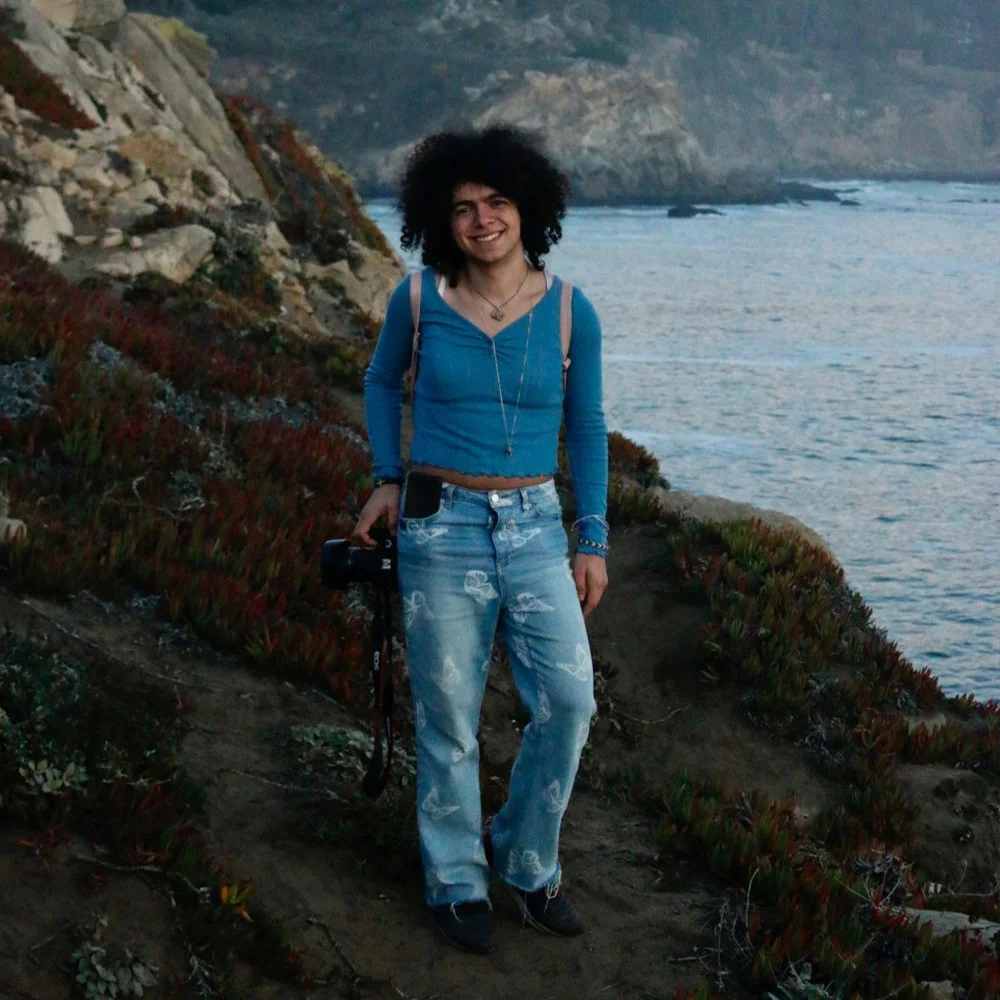
Nickan F

William P
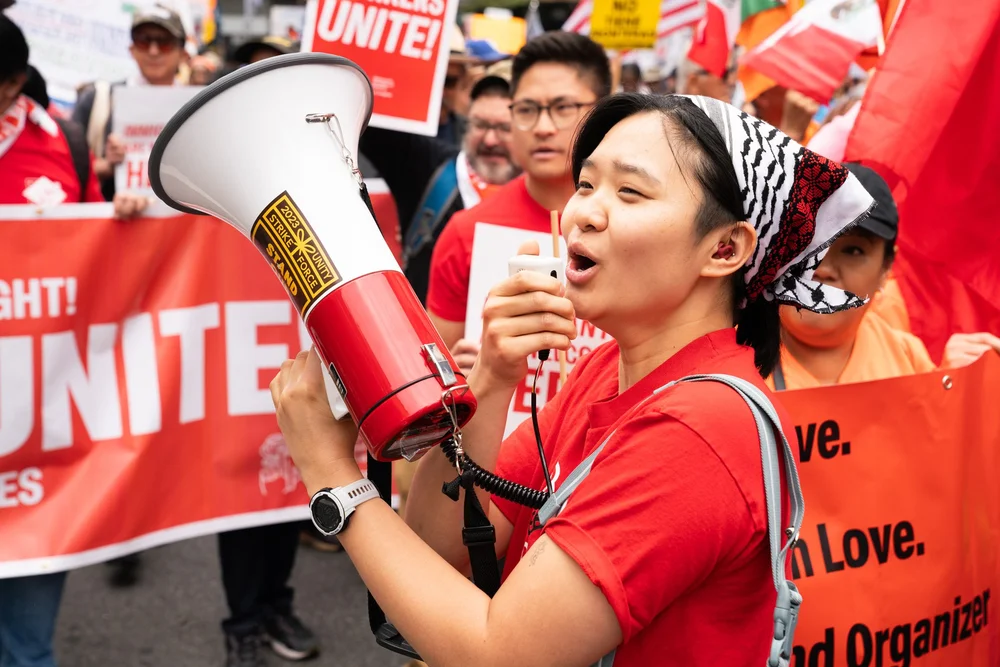
Jules Y

Michael L
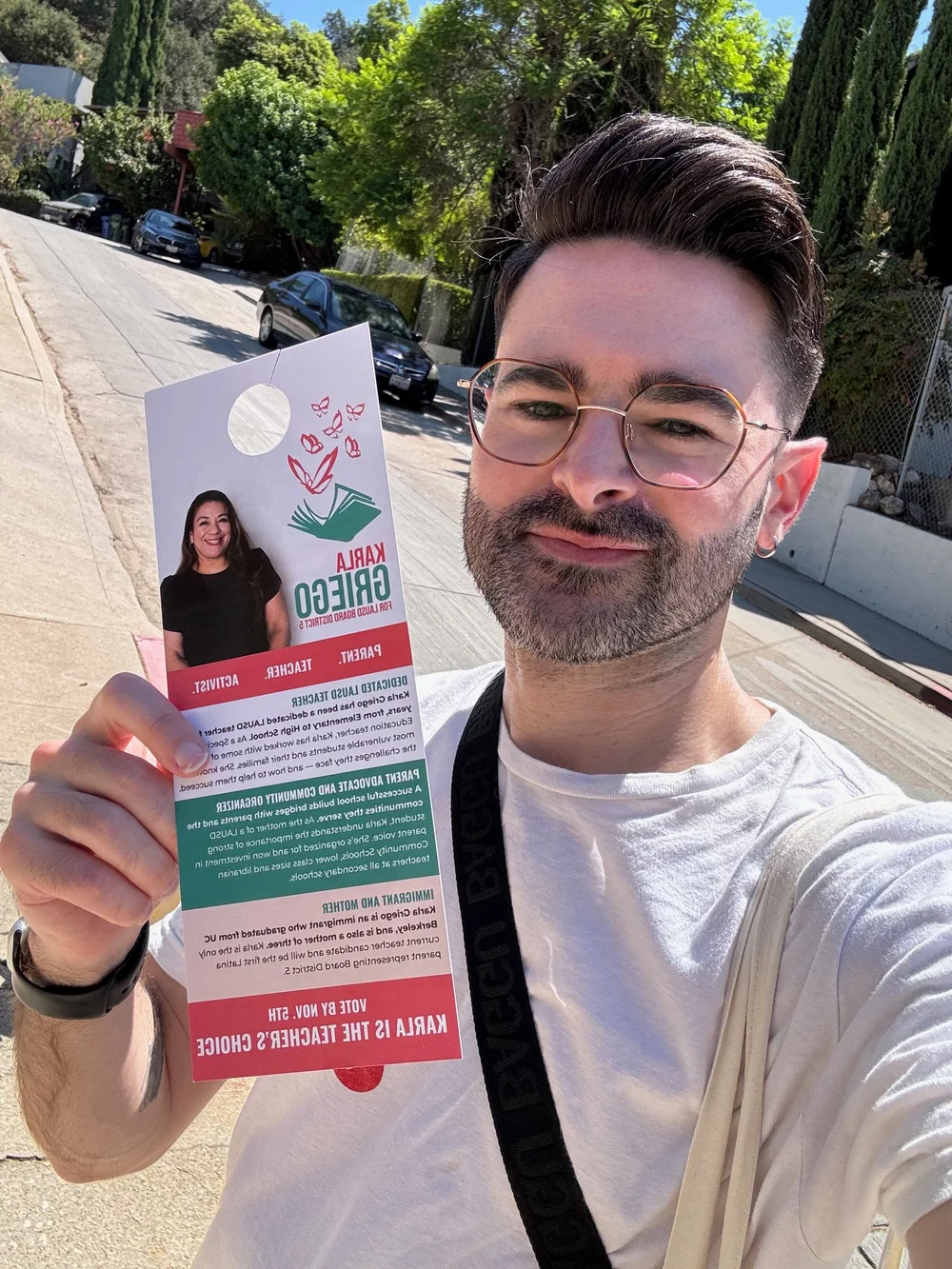
Paul Z
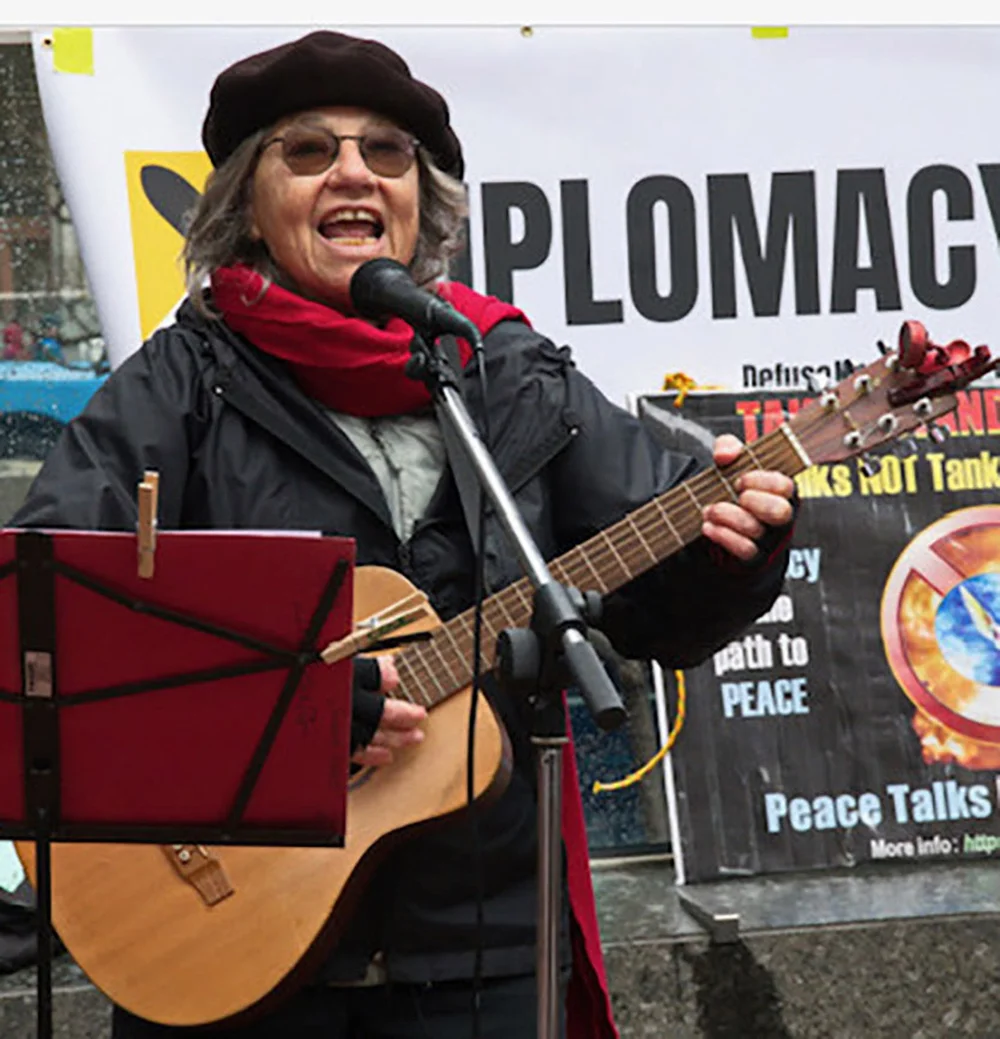
Bonnie L
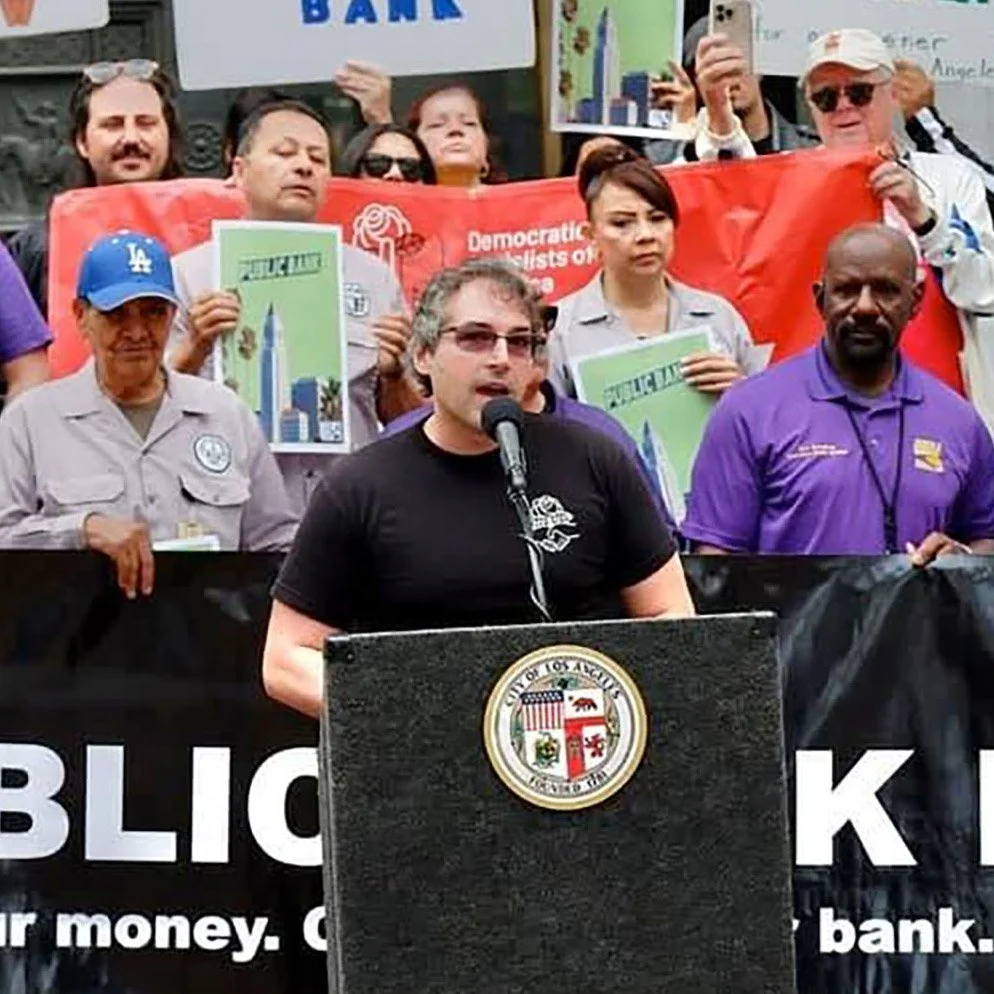
Mark G

Our seven-member California DSA State Committee, elected last month by State Council delegates, is responsible for organizing and steering the statewide organization between Council meetings. We’re a diverse set of organizers from up and down California, and we’re excited to be shepherding California DSA for the next year! Amid Trump’s fascist attacks on immigrants, the LGBTQ+ community, and the working class writ large, we're committed to steering an organization that is an active part in the struggle against his administration and to building an alternative vision for California.
Introducing our State Committee members:
Michael L (he/him)
Michael has been participating in EBDSA since 2017 in Medicare for All, labor solidarity and electoral organizing. He is active in the chapter’s priority campaign, ‘Fighting Oligarchy: Support Federal Workers’. He worked for the California Nurses Association//NNU for 25 years and has been a member of DSA since 1982.
William P (he/him)
William has been in DSA since 2021 and has canvassed in every election cycle since 2018. While at college, he co-founded a YDSA chapter that participated in a push to get the college to divest from Israel. He is currently a member of DSA-LA.
Jules Y (they/them)
Jules has been a member of DSA-LA for three years. They have been a labor and community organizer since organizing with dining hall workers to win a union at their university in 2018. This is Jules’s second term as Secretary on the State Committee.
Nickan F (she/her)
Nickan has been a DSA member for seven years and has served on the State Committee since 2023. She is most active in electoral organizing, having led the electoral committees of both East Bay DSA and CA DSA, and has worked on and volunteered for numerous campaigns.
Mark G (they/he)
Mark has been a member of DSA-LA for eight years, and serves as its Recording Secretary and co-chair of its campaign for stronger rent control.
Bonnie L (she/her)
Bonnie has been an East Bay DSA member since 2017. She was a co-founder of the chapter Climate & Environmental Justice Caucus and currently serves as Climate Action Committee and Boycott Chevron Campaign co-chair. She is a member of the American Federation of Musicians Local 1000.
Paul Z (he/him)
Paul is currently serving as the organization's Communications Director and is a member of DSA Los Angeles, where he serves as one of the Eastside Branch Coordinators. Since joining DSA in 2020, Paul has been active in many electoral campaigns and specializes in design and visual communications at the local, state, and national levels.


Your National Political Committee newsletter — Ideas into Action
Enjoy your August National Political Committee (NPC) newsletter! Our NPC is an elected 27-person body (including two YDSA members who share a vote) which functions as the board of directors of DSA. This month, you can welcome the new NPC, watch Rep. Rashida Tlaib’s electrifying speech, check out the Convention results, and get involved in DSA work!
And to make sure you get our newsletters in your inbox, sign up here! Each one features action alerts, upcoming events, political education, and more.
First off, we’d like to send a warm hello and gratitude to you for trusting us to be your national co-chairs for the next two years. This is a critical time for DSA, as we face down increasing fascism at home, militarism abroad, and the ticking clock of climate catastrophe. But we also continue to ride a wave of sustained membership growth, an increase in new DSA chapters and organizing committees, electoral wins, labor movement solidarity, and a general mood of excitement about the possibility of a democratic socialist future, one in which no one profits from the exploitation of another person. We are committed to working together alongside you all to level up DSA’s capacity, strength, and clarity of purpose as we build our fighting organization into the mass party that the moment demands.

We’d also like to congratulate our new fellow National Political Committee members, who were elected at our 2025 Convention earlier this month to a newly expanded NPC. They are:
- Christian A. (Long Island DSA)
- Eleanor B. (NYC-DSA)
- Hayley B.B. (Portland DSA)
- Jeremy C. (NYC-DSA)
- Cliff C. (Orlando DSA)
- Sidney C.W. (NYC-DSA)
- Kareem E. (NYC-DSA)
- Cerena E. (Houston DSA)
- Abdullah F. (DSA-LA)
- Frances G. (DSA-LA)
- Ahmed H. (NYC-DSA)
- David J. (NYC-DSA)
- John L. (New Orleans DSA)
- Francesca M. (Connecticut DSA)
- Luisa M. (Portland DSA)
- Sarah M. (Portland DSA)
- Clayton R. (DSA-LA)
- Katie S. (Ithaca DSA)
- Ella T. (Seattle DSA)
- Andrew T. (Denver DSA)
- Cara T. (Metro Detroit DSA)
- Amy W. (Seattle DSA)
- Hazel W. (DSA SF)
Congratulations to all and we look forward to working with you!
The NPC elections were certainly not the only exciting thing that happened at Convention. Over 1300 delegate members (and hundreds of alternates) also committed to expanding our socialist electoral program, building out our Palestinian solidarity and internationalist organizing work, deepening our participation in the labor movement and toward an arms embargo against Israel, fighting fascist attacks on immigrants and standing up against state repression from ICE, preparing for May Day 2028, building worker power against Amazon, uniting labor and the left to run a socialist for president in 2028, and so much more!
We were honored by a fiery keynote speech by Rep. Rashida Tlaib, who grounded us in our place in American history and exhorted us to “take this country back for our working families and defeat these pathetic, cowardly, hateful fascists. We’re going to win because we don’t have any other options, and yes, we are going to free Palestine. They don’t have any other choice. Our movement isn’t going anywhere, and we’re just getting started.” This was one of our most mediagenic conventions yet, with new media and streamers like Hasan Piker observing and engaging in real time, and mainstream outlets like The Guardian noting the energy of our winning streak and Rolling Stone going in-depth on how we are preparing to seize the political moment.
We also had dozens of volunteers helping staff and elected leadership with press, tech, security, and more, in a real show of collective organizing strength. And even members who did not attend were able to tune in for deliberation and to watch our first-ever Cross-Organizational Political Exchange with socialist parties from around the world and labor unions and social movement organizations from around the country — over 1400 unique viewers watched the Convention livestream online, averaging about 200 at any given time. You can read the preliminary results here, and we will be keeping you updated as the NPC considers the overflow items over the next few months.
There’s a real excitement that comes from charting a path forward, and now it’s time to knuckle down and get to work on putting these ideas into action. If you need a bit more inspiration, though, here are some things you can sign up for right now:
- Solidarity Dues Phonebank (Sunday 8/31 at 4pm ET/3pm CT/2pm MT/1pm PT): Member dues are DSA’s primary source of income and help create some of the amazing tools and resources that DSA offers. Help us call through folks and make the hard ask: can we count on you to switch to Solidarity Dues? It’s a friendly list of fellow DSA members, so these are fantastic folks to practice those organizing conversations with.
- Fight Fascism, Build Socialism (Tuesday 9/2 at 7pm ET/6pm CT/5pm MT/4pm PT): The chaos of this second Trump administration is an onslaught meant to overwhelm us and make us feel powerless. But we are not powerless when we’re organized, and we’re still fighting for someone we don’t know. Join us on this call featuring how DSA members across the country are fighting back! After Labor Day, it’s time to take the fascists back to school.
- YDSA’s Fall Drive Launch Call (Tuesday 9/2 at 8pm ET/7pm CT/6pm MT/5pm PT): At campuses all over the United States, YDSA chapters are continuing their fights for ambitious demands around sanctuary campuses, worker rights, divesting from the genocide in Palestine, and so much more! To kick off this semester, we’re gathering to hear from successful chapters around the country about what they’re working on, how they plan to grow this fall, and what you can do to see the same impact locally!
- September Leadership Intensive (Saturday 9/6 and Sunday 9/7 starting at 1pm ET/12pm CT/11am MT/10am PT): Ready to take the step into chapter or committee leadership? The Leadership Intensive is the most comprehensive training that DSA provides (it’s 2 days long!) for folks who are ready to take on leadership work, and will get you familiar with everything from tech tools to the theoretical basis of the democratic project.
- Emergency Tenant Organizing Committee 2025 Fall Training Series (Saturdays in September beginning Saturday 9/6 at 2pm ET/1pm CT/12pm MT/11am PT): The Housing Justice Commission’s summer Emergency Tenant Organizing Committee (ETOC) cohort is now accepting prospective tenant organizers. ETOC is an initiative to promote the formation of militant tenant unions through tenant-to-tenant training and instruction. In this series, you’ll learn the fundamentals of tenant organizing on a citywide or regional scale.
- National DSA 101 (Sunday 9/14 at 2pm ET/1pm CT/12pm MT/11am PT): Whether you’re just now becoming a member or you’re a longtime member interested in doing more DSA work, come to this program to get a birds-eye view of what we’re up to.
- Socialist Cash Takes Out Capitalist Trash Phonebanks (various times/dates): Help support our nationally-endorsed slate by spreading the good word about (and asking comrades for donations for) our candidates in Detroit, Jersey City, Atlanta, Renton, Tacoma, and Ithaca, all of whom are fighting like hell to win and build power at the municipal level.
And that just scratches the surface of upcoming opportunities! Keep an eye out for new opportunities — we’ll keep sending them your way.
In the meantime, solidarity to you and we can’t wait to see you at an event soon!
In struggle,
Megan Romer and Ashik Siddique
DSA National Co-Chairs
The post Your National Political Committee newsletter — Ideas into Action appeared first on Democratic Socialists of America (DSA).
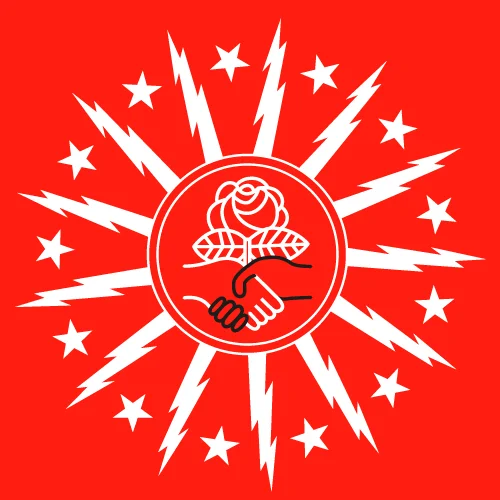

Buffalo DSA Urges Reconsideration of Broadway-Fillmore Police Training Facility
Since March 2025, Buffalo DSA has endorsed LOLA’s Communities Not Cops campaign, with overwhelming support from our general membership. As this project begins to receive the citywide attention and debate it deserves, the Buffalo DSA Steering Committee reaffirms our support of efforts to educate and agitate against a police training facility and shooting range on Paderewski Drive. We also urge all members of Buffalo DSA to follow LOLA’s calls to action re: demanding Common Councilmembers vote “NO” on the rezoning of the Paderewski Drive location, as listed on their Instagram page.
The creation of a police training facility increases the Buffalo Police Department’s capacity for targeting working-class Buffalonians through violent interventions, especially those in minority ethnic groups and within our city’s poorest communities. This is especially heinous considering Paderewski Drive was once home to a community center; we are disappointed to see the city invest in more militarized policing, rather than restoring a public civic space. This is completely counter to the just city we deserve – not just for those in the immediate neighborhood, but for working class communities citywide. We have been disappointed by the limited scope of debate around this project to this point, which suggests that only the immediate neighborhood will be impacted by this facility. We encourage comrades and neighbors to consider the larger ramifications of a police training facility of this kind.
Said limited scope of debate stems from a source actively collaborating with the Buffalo Police Department to push this project through. The Central Terminal Neighborhood Association is claiming a mandate to speak for the entire area, despite reports that opposition to the project has now spread beyond LOLA’s initial campaign, and to Broadway-Fillmore community members who have just learned about the project relative to its progress. Neighbors deserve fair representation of the project to them, rather than vague promises of a “community benefits agreement” with BPD – the details of which include only surface-level commitments toward “youth programs” in part of the facility and keeping neighborhood trees intact. We also condemn undignified smear tactics, printed or otherwise recorded publicly, that concerned citizens across Buffalo are only seeking cameras or clicks.
As the Common Council, the Buffalo Police Department, and other crucial city officials collude to advance this project via their Sep. 2 vote, we once again doubt their belief in democratic processes, and question the Central Terminal Neighborhood Association’s mandate to speak for the city on the matter.
Our chapter’s vision for demilitarized policing takes from the rich history of American socialism, notably from the legacy of American socialist Eugene V. Debs. Debs stated in 1918, after his conviction for violating the Sedition Act:
“While there is a lower class, I am in it, while there is a criminal element, I am of it, and while there is a soul in prison, I am not free.”
While we cannot speak for a long-deceased comrade, Debs’ rhetoric throughout his life demanded the liberation of the working class from oppression and tyranny. To aid and abet the tyranny of modern policing is antithetical to the American socialist tradition.